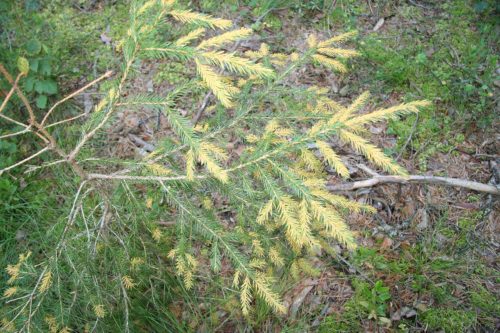Spruce needle r
Do not confuse with:
Coleosporium tussilaginis
Spruce needle r
In spring with cool weather and lots of wetness, the spores originating from the Ericaceae species infect the young formed needles of the spruce trees. In summer, the fungi form orange powder-like spores. These infect the Ericaceae species.
In autumn, the infected needles yellow and then fall off.
Spruce needle r
This fungus can also cause a single witch’s broom in the spruce.
Where to find
- Blue spruce (Picea pungens)
- White spruce (Picea glauca).
- Black spruce (Picea marina).
- Norway spruce (Picea abies)
Control
This fungus does not pose a major threat to the health of the spruces and does not need to be controlled.
Prevention
Spruce needle r
To avoid infection with the fungus, provide a location where the wind has free play. And remove witches’ brooms.

